World War I, Italy and Italian Tanks
In the years that led up to World War One, Italy had nominally sided with Germany and Austria-Hungary in the Triple Alliance. Despite this, in the years before the war, Italy had made diplomatic overtures towards the United Kingdom and France. This was because the Italian government had grown convinced that support of Austria (the traditional enemy of Italy during the 19th century Risorgimento) would not gain Italy the territories she wanted: Trieste, Istria, Zara and Dalmatia, all Austrian possessions. In fact, a secret agreement signed with France in 1902 for all intents and purposes nullified Italy’s membership in the Triple Alliance.
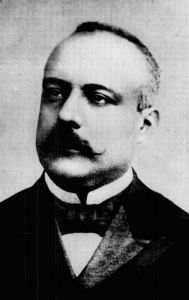
Antonio Salandra was a conservative Italian politician who served as the 33rd Prime Minister of Italy between 1914 and 1916.
A few days after the outbreak of the war, on 3 August 1914, the government, led by the conservative Antonio Salandra, declared that Italy would not commit its troops, maintaining that the Triple Alliance had only a defensive stance and Austria-Hungary had been the aggressor. In reality, both Salandra and the minister of Foreign Affairs, Sidney Sonnino, began to probe which side would grant the best reward for Italy’s entrance in the war. The diplomatic moves led to the London Pact (26 April 1915), signed by Sonnino without the approval of the Italian Parliament. According to the Pact, after victory Italy was to get Trentino and the South Tyrol up to the Brenner Pass, the entire Austrian Littoral (with Trieste), Gorizia and Gradisca (Eastern Friuli) and Istria (but without Fiume), parts of western Carniola (Idrija and Ilirska Bistrica) and north-western Dalmatia with Zara and most of the islands, but without Split. Other agreements concerned the sovereignty of the port of Valona, the province of Antalya in Turkey and part of the German colonies in Africa.
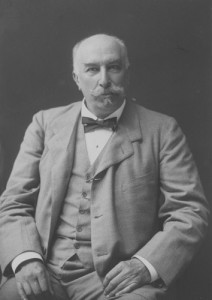
Giovanni Giolitti (October 27, 1842 – July 17, 1928) was an Italian statesman and Prime Minister of Italy five times between 1892 and 1921. He did not support Italy’s intervention in WW1 initially.
Under the London Pact, Italy joined the Triple Entente. On 3 May 1915 Italy officially revoked the Triple Alliance. In the following days Giolitti and the neutralist majority of the Parliament opposed declaring war, while nationalist crowds demonstrated in public areas for it. On 13 May 1915 Salandra offered his resignation to King Victor Emmanuel III, but Giolitti, fearful of nationalist disorder that might break into open rebellion, declined the position of prime minister. Salandra remained in office, and got his declaration of war against Austria-Hungary on 23 May 1915. (Italy declared war on Germany fifteen months later.) Italy thus entered the war with the support of only a minority of its population and politicians.
As Italy entered WW1 on 23 May 1915, the situation of her forces in the African colonies was critical. Italian Somaliland, in the east was far from pacified. In Cyrenaica, the Italian forces were confined to widely separated points on the coast. In Tripolitania and the Fezzan, the story has a different beginning. In August 1914, during their campaign against the Ottoman Empire the Italian forces had conquered most of western Libya. In November 1914, this advance had turned into a general retreat, and on 7 April and 28 April, they suffered two reverses at Wadi Marsit (near Mizda) and al-Qurdabiya (near Sirte) respectively. By August 1915, the situation in Tripolitania was similar to that of Cyrenaica. The conquest of all of Libya would not be resumed until January 1922, well after the end of WW1.
In the European war, Italy’s participation met with an equal lack of success. Britain and France had wanted Italy to join the war on their side so that a new front could be opened up in the south. The plan was to split the Central Powers further so that their military strength on the Western and Eastern Fronts could be weaked weakened. The logic was sound. Success however required military victories by the Italian Army and this was, against the politician’s expectations, not forthcoming.
Between the start of WW1 and May 1915, Italy had done little or nothing to prepare the Italian Army for entry into the War, despite the interest of the politicians in joining in on one side or the other. Indeed, at the time of Italy’s entry into WW1, the Italian military was suffering from equipment and munition shortages as a result of the Italo-Turkish War in Libya (1911–1912). Between 1915 and 1917 Italian troops managed to penetrate a mere 10 miles into Austrian territory, with the fighting largely confined to small area along the northeastern border where Italy’s border pushed up against Austria-Hungary. The Austrians occupied the hills and the mountains while the Italians attempted to move north from the plains and valleys.
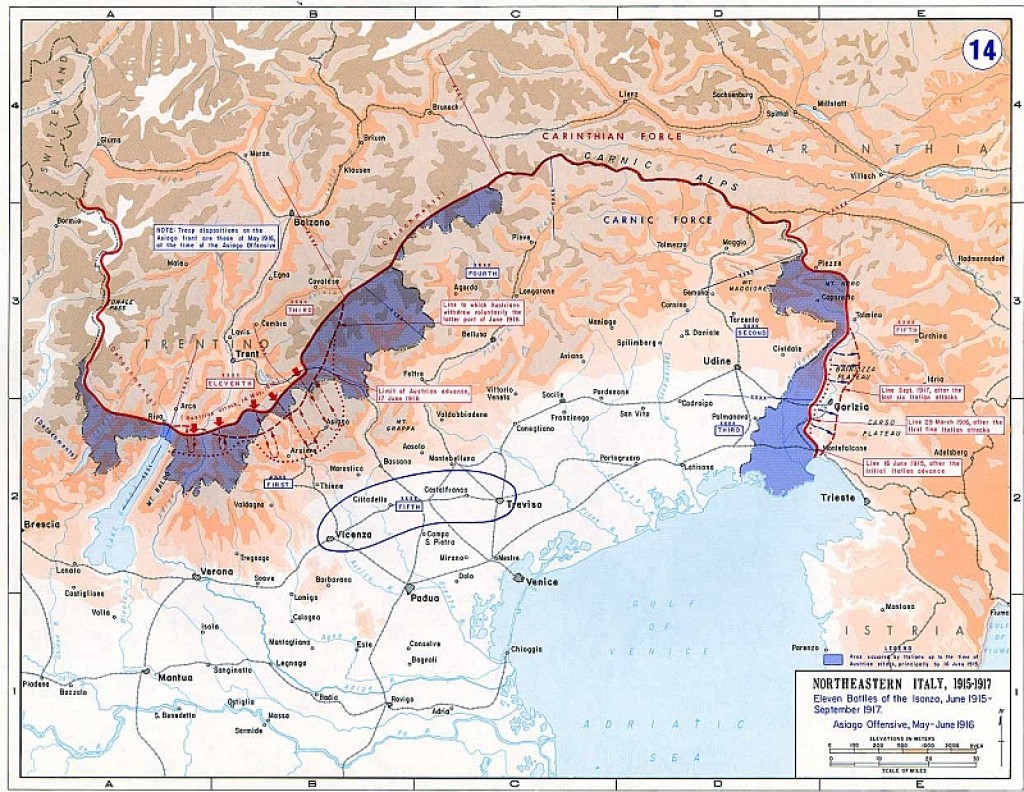
Map of the Italian Front (1915-1917). Blue areas show where major battles occurred, although the blue area in the east (right) was where 12 Battles of the Isonzo were fought.
Neither side one a strategic advantage, although casualties were heavy. Indeed, on 13 December 1916, known as “White Friday”, 10,000 soldiers were killed by avalanches in the Dolomites. The frontline was close to the centers of population in northern Italy and the cities of Venice, Verona and Milan were close enough to the fighting to be in danger if a major breakthrough by the Ausro-Hungarian Army occurred. In May and August 1917, the exhausted Italians launched the Tenth and Eleventh Battles of the Isonzo. The Austrians also were near breaking and the Italians managed to capture some ground, but were unable to break through. At this point, the Austrians asked for German help. Having decisively repulsed the Russians, the Germans sent six divisions and prepared for what would be the Twelfth Battle of the Isonzo (also called the Battle of Caporetto after the Italian town of that name– now called Kobarid and part of Slovenia).
Mutinies and plummeting morale crippled the Italian Army from within. On 24 October 1917 the Austrians and Germans launched the Battle of Caporetto, pushing the Italians back 15 miles in the first day. By the time it was over in November, they had pushed the Italians back nearly 100 miles in one of the most spectacular advances of the war. The Italians suffered some 300,000 casualties, mostly taken prisoner, and lost all of their artillery. Unfortunately for the attackers, they outran their supply capability and thus the offensive ended 20 miles short of Venice in November.
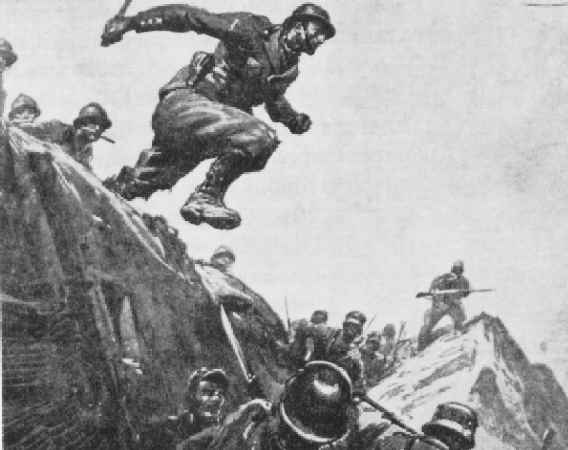
The Arditi would jump inside the trench while the enemy was huddling down, and use their daggers at close quarters to suppress enemy resistance.
France, Britain and the US all began sending assistance to Italy and in the spring of 1918, Germany pulled out its troops for use in its upcoming Spring Offensive on the Western Front. In June 1918 the Austrians attacked in the Battle of the Piave River. The Italians repulsed the attack but launched no counter-offensive until October-November 1918. By October 1918, Italy had finally gathered together enough soldiers to mount an offensive. The attack targeted Vittorio Veneto, across the Piave. The Italian Army broke through a gap near Sacile and poured in reinforcements that crushed the Austrian defensive line. On 3 November, 300,000 Austrian soldiers surrendered. On 3 November, Austria-Hungary sent a flag of truce to the Italian Commander to ask again for an armistice and terms of peace. An armistice was signed and took effect on 4 November, at three o’clock in the afternoon.
The war has since become known as the “War in snow and ice”, as most of the 600 km frontline ran through the highest mountains and glaciers of the Alps. 12 meters (40 feet) of snow were a usual occurrence during the winter of 1915/16 and thousands of soldiers died in avalanches. The remains of these soldiers are still being uncovered today. Climbing and skiing became essential skills for the troops of both sides and soon Ski Battalions and special climbing units were formed. It was during these years that the Alpini, their spirit and their mules became famous, although at the cost of over 12,000 casualties out of a total of 40,000 mobilized Alpinis. The Arditi units also became famous within Italy.
The task of Arditi units was not to clear the way for regular infantry to attack enemy lines, but to completely overrun enemy positions. The most daring volunteers were chosen, particularly those who were not bothered by loud incoming artillery fire close by. The men also studied fencing and were masters of hand-to-hand combat. Once ready, they were sent to the front armed with a dagger and hand grenades. Most didn’t carry rifles or carbines because they would be cumbersome to fire in the confined spaces of a trench.
The Arditi approached enemy trenches while they were being shelled by Italian artillery. Just as the barrage was lifted they would jump inside the trench while the enemy was huddling down, and use their daggers at close quarters to suppress enemy resistance. These primitive tactics were surprisingly effective. Arditi had to hold the positions they conquered for 24 hours and then would be replaced by the regular infantry. Arditi might lose 25% to 30% of their numbers during such an attack. Their motto was “O la vittoria, o tutti accoppati” meaning “We either win, or we all die”
Italian alpine troops following the first world war remained an elite force: In 1935 the government of Italy reorganized its Armed Forces, creating six Alpine divisions and forming two new Alpini regiments. As a result of the unusual relationship between Italy and Finland that had developed through the 1930’s, one of these Alpini Divisions would be conducting a Winter Warfare Exercise in Finland in late 1939 when the Winter War broke out. Mussolini permitted this Alpini Division together with Italian Air Force and naval units that had been sent to Finland to fight as volunteers under Finnish command through the entire Winter War.
Italy’s World War One Tanks
During World War I, Italy did not field any armoured units in combat, due to a lack of tanks. In 1915, Captain Luigi Cassali proposed a project to build an armored vehicle equipped with two machine gun turrets. However, the project was not accepted. However, an officer serving with the Italian forces in France observed French tanks in operation as early as September 1916 and convinced the High Command to try the new vehicles. This was artillery officer Captain Alfredo Bennicelli, who was also a Count and a Senator – factors which probably helped him sell the idea.
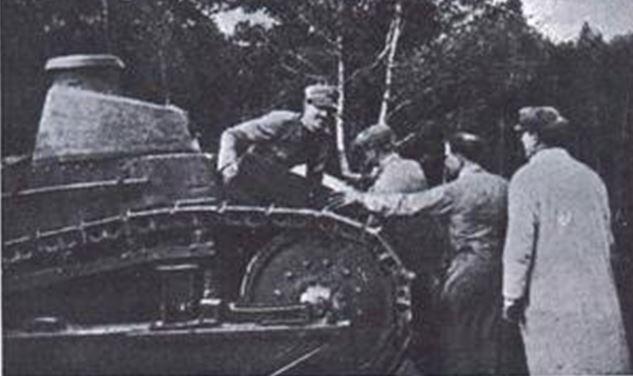
Count Alfredo Bennicelli (Major in Artillery) climbing in or out of a Renault FT-17. Bennicelli was involved in numerous actions on the French Front and was a big proponent of tanks. Bennicelli tested French tanks and found them superior to British ones and in particular liked the FT series and had some FT’s sent to Italy for testing.
The Italian General Staff ordered a single French Schneider CA-1 for extensive trials in 1916 but the design was ultimately rejected. A similar study for an indigenous model started the same year when FIAT, by then the industrial giant of Italy, proposed a new design, the FIAT 2000. An initial order to design and produce the first Italian tank model was awarded to the FIAT automobile company in 1916 based on the design they had put forward. The prototype of the new tank was displayed to a military commission on 21 June 1917; its mechanical systems were complete but its superstructure was added later, being represented on the prototype by a wooden mockup with a conical open turret and dummy gun. The final configuration of the superstructure was not completed until 1918. This, the first Italian designed and built tank, was the Fiat 2000.
Two Fiat 2000 prototypes formed a part of Italy’s very first armoured unit, which was formed only weeks before the end of WW1. This was the “Sezione speciale carri armati” (Armored Vehicles Special Section), formed up on September 1, 1918 in Verona : the. This unit was later denominated “Reparto speciale di marcia carri d’assalto” ( Special Forward Assault Tank Unit) and, after WWI ended, the “Batteria autonoma carri d’assalto” (Autonomous Assault Tanks Battery”), and comprised six Renault FT 17’s and the two Fiat 2000 prototypes.
The Fiat 2000 Tank
The FIAT 2000 was a substantial vehicle, of comparable dimensions to the British Mark V tanks, and weighing 40 tons as compared to the Mark V’s 28 tons. This tank was often called “the heaviest World War I tank” but this is not strictly accurate, since the FIAT 2000 never actually saw combat in World War I. Also, the modest order for 50 tanks was never completed: the only Fiat 2000 tanks produced were the two prototypes. Despite the fact that this was Italy’s first attempt to design and build a tank, Fiat appeared to have gotten it more or less right.
The layout of the FIAT 2000 differed to the other tanks then in use, especially the British ones. The engine was separated from the crew; not be being placed behind or in front of the crew compartment, but below it. It’s possible that the purpose of the original design with the mechanicals separated from the upper structure was to allow the hull to be used as the basis for other vehicle types such as SPG’s, but this is speculation without any evidence either way.
The overall crew was 10 men. Armament originally consisted of the turret mounted gun and ten machineguns (three on each side and four in front), but this left the rear of the tank undefended and tended to contaminate the interior with propellant fumes, so it was decided to install a ventilator in the roof and alter the machinegun positions to two on each side, three at the rear, and two in front. The driver was seated at the front in an armoured compartment, with very good overall vision through a large port forward and small lateral loopholes. The tank commander was positioned in the upper part of the tank, which was completely separated from the engine and transmission compartment (another innovation). The 3 rear machine gunners had to handle their weapons from a kneeling position, which was not particularly comfortable. However the 4 other machine gunners could fire from either a seated or an upright position. The 7 machineguns were provided with 7,000 rounds of ammunition in total. The main gunner and the loader were seated at the back of the turret.
Perhaps the most interesting feature of the tank’s weaponry was the turret; apart from the Renault FT, this was the first tank to have a rotating turret mounted above the hull. The turret was made of four pieces rivetted together, had room for two crew members and could traverse a full 360°. On the issue of armament the above-mentioned Major Bennicelli (the man also responsible for bringing the Renault FT-17 to Italy) seems to have been pushing for a 75mm gun or 76mm. Major Bennicelli being an artillery man was probably choosing the 75/27CK or similar type of gun he would have been familiar with. A later plan on 1st May 1918 planned to install an improved 77mm gun but in the end the chosen gun was the 65/17 howitzer (of 65mm caliber with a barrel 17 calibers long) with 45 rounds. Thanks to the tall turret and the space available beneath it, the gun’s elevation was -10/+75°. The Fiat 2000 was actually the first tank to be equipped with a fully rotating turret (before even the French FT 17).
One source states that a 14mm heavy machine gun was also planned to be fitted with the main gun but this cannot be verified due to lack of clear documentation and the time that has now passed. This may also have arisen because of some confusion over the naming of the machinegun – the type fitted was the 6.5mm FIAT 14, which maye have led to this mistake. The secondary armament as above mentioned consisted of 7 x 6.5mm machine-guns. Four of them were placed at the corners of the hull and could swivel over a 110° angle. Two other machine-guns were placed in the center of the side walls and the last was placed in the center of the rear. Two machine-guns could fire towards front, three to each side and three towards the rear of the tank. The machine-guns however could fire only a few degrees of negative elevation, thus creating dead space around the circumference of the vehicle.
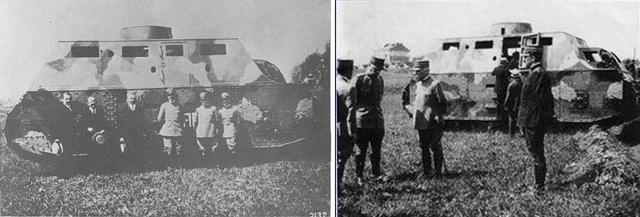
2nd Prototype late 1917 to early 1918 with upper structure partially completed and first model cylindrical turret
The tracks were longer than the hull, but were lower in comparison to the wrap-around type found on the British “rhomboidal” tanks and thus lower in weight. The armour was of a clean design, being made of riveted vanadium steel plates. It was 15 mm thick on the sides and 20 mm on the front. Fiat spent a lot of money on these prototypes and used the best quality vanadium armour plate available from the steel works at Terni. This vanadium armour plate was intended for Italian warships such as the “Christopher Columbus” and was significantly more expensive than standard armour. Large armoured skirts made from 20mm plate also covered the 4 bogied suspension units on each side, although a weakness was noted with track chains being exposed to enemy fire. The sloped shielding on the front and upper part of the tank hull offered additional protection (the sloped shielding offered better protection than vertical shielding, because it can in many cases deflect the enemy projectile).
However, the excessive height of the tank made it an easy target. The steering was conventional and turns were made by reducing power to one of the tracks. The tank could also be slowed down by means of the side brake. The excellent suspension of the FIAT-2000 consisted of four oscillating carriages equipped each of two road-wheels with leaf springs. The steel tracks at only 450mm broad were very narrow for the weight of the tank, and ground pressue was thus considerable. This proved detrimental to cross-country travel.
The FIAT-2000 was propelled by a very advanced engine, the FIAT Aviazione A12 aviation type water-cooled 240 hp engine with 6 cylinders located at the rear of the tank and driving the tracks through a transverse transmission. The fuel capacity was 600-1,000 liters, but this gave only 75 km range on paved roads. Each cylinder was equipped with two valves and two exhausts. Engine cooling was via both ventilator and radiator. The electric system included the magnetos, two dynamos and a starter motor. The engine actuated with principal clutch, a gear box with reducer. Frin the gear box, the movement was transmitted to the axle transversely. On this axle the discs were assembled clutch and sprocket-wheels.
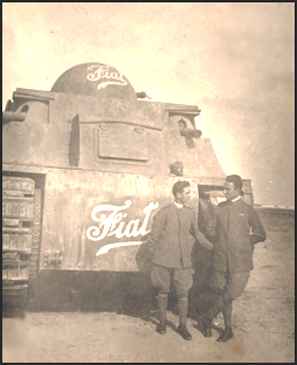
Fiat 2000 on active service in Libya: photo shows Pietro Giorgetti (left), an aviation engineer and motor mechanic with the 89a Squadriglia S.V.A. in front of a tank Fiat 2000. (Ref http://www.earlyaviators.com/egiorge1.htm)
After WW1 ended, the FIAT 2000 was displayed as one of the weapons used “to defeat the enemy” and the two prototypes completed were sent to Libya to fight guerrilla forces, together with other tanks bought from France, in a special unit, the Tank battery (1° Batteria autonoma carri d’assalto). The only known account of their combat use comes from ‘Le Forze Armate’ saying that they were both to be used for the reconquest of Giarabub but that one broke down at Porto Bardia and the other some distance from the action leaving the actual battle to be carried out with only Fiat 3000s and a variety of armoured cars and trucks. Col. Pederzini states that one of the Fiat 2000′s was later dismantled in Benghazi prior to 1935 for unstated reasons.
Whether they saw any action elsewhere in Libya is not known at this time but the late Libyan dictator Colonel Gaddafi showed them in action on his stamps. In Libya, the FIAT tank proved capable of an average speed of 4 km/h, and so, after two months its career ended, being unable to keep up with rapid movement of the enemy.
One remained in Tripoli and the other was sent to Italy in the spring of 1919, where it performed before the King at Rome Stadium. The tank put on a convincing display: it climbed a 1.1 m wall, then faced another 3.5 m wall, which it knocked down with its weight. Then a trench of 3 m width was successfully crossed and several trees were knocked down. This impressive performance failed to revive interest in the heavy tank and so it was in the end abandoned.
The surviving FIAT 2000 at Rome was left in a depot for several years, until it was sent on the orders of Colonel Maltese to Forte Tiburtino, risking catching fire during the trip. In 1934 it was seen again in a Campo Dux parade, having been repainted and even rearmed, with two 37/40 mm guns instead of the forward machine guns. It’s possible that at this time the engine was also improved but this is also not entirey clear. It was later reportedly transformed into a monument at Bologna, after that its fate is unknown, like that of the other Fiat 2000 tank. So ended the life of what was a truly interesting and distinctive armoured fighting vehicle.
The first Italian Tank of the Interwar Decades – The Fiat 3000
In 1918, France sent 100 Renault FT17 tanks to Italy so that Italian troops could get acquainted and trained with tracked combat vehicles while Italian industry began to build tanks in quantity for the Italian Army. At this time, in 1918, Fiat and Ansaldo were the only industrial concerns in Italy that were large enough to undertake tank production. The Italians produced a slightly improved version of the Renault DT, the Fiat 3000, a tank which would go on to be the standard tank of the emerging Italian armored units after World War I. Unfortuntely for the Italian Army in WW1, none would enter service before the War ended.
The Fiat 3000 was based on the French Renault FT. Design improvements included side skirt armour, a redesigned turret with twin 6.5mm machineguns and a more powerful motor mounted in a lower, transverse position. This and the fact that the Fiat 3000 was lighter than the FT17 resulted in, among other things, a much improved speed (it was three times as fast as the FT17). All facings were given angled surfaces. Overall, the Fiat 3000 was a little larger than the FT17. With a Fiat 4-cylinder 50hp gasoline engine delivering 65hp, maximum speed was 15mph (compared to 5mph for the French and American versions) while range was 59 miles. It was apparent at the time that even with the more powerful engine, the Fiat 3000 was underpowered for cross-country movement. This fixation with high road speed rather than cross-country speed was to be a design characteristic of Italian tanks up to and through WW2.
It is safe to say that during the early 1920’s, the FIAT 3000 was one of the very best tanks in the world. The design was accepted, the Italian Army planned widespread use of the new weapons and 1,400 were ordered, with deliveries to begin in May 1919. The end of WW1 caused the original order to be cancelled and only 100 were delivered, with the first prototype completed in June 1920 and tested during 1921. The first of the production models began to enter service in 1923 and were officially designated as the Carro d’Assalto Fiat 3000, Model 21 (“Fiat 3000 Assault Tank Model 21”). Tests revealed that the armament, consisting of two 6.5 mm machine guns (with 5,000 rounds), was inadequate, and adoption of a 37 mm gun as main armament was urged.
From as early as 1922 the tankers wanted a more powerful armament. An improved model was tested in 1929 and introduced in 1930 with the designation of Carro d’Assalto Fiat 3000, Model 30. This was armed with a 37mm gun in place of the twin machine guns and had a prominent cupola on the turret. It also differed from the Model 21 in that it had a more powerful engine (65hp), exhaust silencers and towing eyes, improved suspension, a different engine compartment silhouette, and the external stores were stowed differently. Some Model 30’s were also produced with two 6.5 mm machine guns as the main armament, as on the Model 21, in lieu of the 37 mm gun.
A final version, the Fiat 3000B Modified (L5-21), was a 1936 modification armed with twin 37mm guns. However, due to poor gearing the tank’s speed actually dropped with these later models (Ansaldo’s president, Ugo Cavallero, faced charges of selling the army poor material but used his connections to Mussolini to avoid conviction).
A limited number of Fiat 3000 Model 21’s were exported to Albania, Latvia and Abyssinia (Ethiopia) prior to 1930. Ironically, most of the 595 tanks fielded by the Italians in Ethiopia were CV31-33 tankettes, which were opposed by three Fiat 3000 Model 21’s previously sold to the Ethiopian government. Three other Fiat 3000 tanks were sold to the Hungarian government in 1936; these tanks fought during the Slovak–Hungarian War of March-April 1939. The designations of these tanks were changed prior to the outbreak of World War II, in accordance with the identification system that was adopted throughout the war by the Italians. The Model 21 was redesignated the L.5/21, and the Model 30 was redesignated the L.5/30.
The Fiat 3000 (Model 21) was first used in action in February 1926 in Libya, when a tank company was sent to be part of the counter insurgency operations and co-operated in the reconquest of the Oasis of Giarabub. The performance of the armored contingent did not live up to expectations. In fact, the tanks did slowed down the columns, raising the ire of the commander, Graziani towards the tank units – one broke down at Porto Bardia, the other broke down “long before reaching the place of use”. Conversely, the Lancia 1Z armoured cars gave a good impression, poroving their speed and agility in the desert conditions.
Italy formed the Reggimento Carri Armati, or Tank Regiment, in 1927 with five small tank battalions (20 tanks per battalion) equipped with the 100 Fiat 3000 Model 21’s built from 1921. The 48 Fiat 3000B models delivered in 1930 appear to have been mixed in among the older models. Some saw action against the Ethiopians in the Second Italo-Abyssinian War in 1935. The Italians did not employ any of these tanks in Spain during the Spanish Civil War, however. By 1940 the 131st Centauro and 133rd Littorio Armored Divisions each had two medium tank battalions still fielding the Fiat 3000 or 3000B, now called the L5/21 or L5/30 respectively in the new Italian system. Centauro took its L5 tanks to Albania in April 1939 when the Italians invaded and overthrew their former puppet-king. The division also deployed some of them against the Greeks in October 1940, though it left over half of them in its depots as the engines had completely worn out.
The 132nd Ariete armored division had been formed and trained with the old Fiat 3000’s (inherited from the 2nd Armored Brigade) but turned them over to Littorio in 1939, to await new production M11/39 medium tanks. Littorio took the old Fiat’s into battle in June 1940 when it attacked the French in Piccolo San Bernardo Pass, but they saw little action on the battlefield, again due to mechanical failures. In the spring of 1941, Littorio received new M13/40 medium tanks and passed the remaining Fiat 3000 relics on to training units. They were also among the last Italian tanks to oppose the Allies in July 1943 when the Allies landed in Sicily. Two Italian tank companies on the island were still equipped with the Fiat 3000’s. One company was dug in and their vehicles were used as fixed fortifications, while the other company was used in a mobile role at the Battle of Gela, with few of the tanks surviving the Allied advance.
However, through the 1920’s it’s safe to say that Italy was similar to those other countries with tank units (Britain, France and the United States), with their units being a continuation of WW1 formations. France primarily had the Renault FT17 tanks, the US had Renault-style Ford 6-ton tanks and Russia was also building modified Renaults. Britain had a new post-war design, the Vickers MkI and MkII series but these were not appreciably superior to the Fiat 3000. Britain had 160 of these tanks in four battalions, Italy had 100 in five battalions. Italy was thus one of the small number of countries that had established and sizable armoured formations as of the late 1920’s.
Through the 1920’s, the Italian Army did little to develop any doctrine of tank warfare. Tanks were seen as being for infantry support and nothing more and training was only for this limited role. There were no strong advocates for the use of armour as they existed in Britain or France – Liddell-Hart and Fuller being examples. They had no Italian counterparts. Perhaps the only innovative military thinker in Italy was Guilo Douhet, and he was an advocate of airpower alone (and in fact had been “…imprisoned in 1917 for overly aggressive advocacy of his views on military matters”). Such books or articles on tanks that were opublished followed the official doctrine for use of tanks, although some did discuss the problems concerning using tanks in the mountainous border areas of Italy.
With no advocates of innovation and of doctrinal development, armoured warfare doctrine within the Italian Army remained static until around 1928 and would not in fact change much until 1935-36. The tank was an infantry support vehicle and remained so within the Italian Army for many years.
Italian Tanks of the Interwar Decades – Tank development during the 1930’s
Two major industrial concerns pretty much monopolized Italian tank production – Fiat and Ansaldo. Fiat was an automobile manufacturer, and produced the engines and suspensions for all Italian tanks manufactured after 1930. It had also bilt the first two Italian tanks, the Fiat 2000 and the Fiat 3000. Ansaldo was a shipbuilding and heavy construction company, and carried out the design work and built the chassis for all post-1930 Italian tanks. Both companies had a close relationship with the Fascist government of Italy. Ansaldo in particular was heavily dependent on government contracts, building many of the ships for the new Italian navy. But at the end of the 1920’s, neither company had many any attempt at independent tank design, and the only initiative, such as it was, had come from the government.
However, by 1930 Mussolini had consolidated his hold on power and began forging ahead with new plans. The theme of these plans was modernization, with the Italian Armed Forces to be the equal of any in the world. The organization and use of tank units also began to be examined. And the idea of a “war of maneuver began to be explored. A new type of unit, the “celeri” (fast) division was created – a combination of cavalry and bersaglieri fighting in integrated units, first openly communicated in the influential book “I Celeri” written by Generale Ottavio Zoppi. To equip these new “celeri” units, new tank units were formed in 1933.
These new tank units were to be equipped with the Carden Loyd CV-29, which was first introduced in 1929. In 1928, an Italian army commission had viewed public demonstrations of a new British fast one-man tankette designed by Major Giffard LeQuesne, which later became the first Carden-Loyd tankette design. The slightly later Carden-Loyd Mk.VI tankette, distributed by Vickers, was an instant success, widely sold and produced under licence abroad by a number of countries. It was fast, versatile, and cheap. A single Mk VI was obtained from the British Army and tested in northern Italy. In 1929, the Italian Army then bought 25 Mk VI’s from Vickers, the last four of which were assembled in Italy by the OTO factory. The CV-29 was small and suitable for use in the mountainous terrain of Italy’s borders. Its small size meant it could more on narrow mountain tracks and cross narrow bridges. The CV-29 was however used only for training and experimentation.
The Carro Veloce (CV) 33 tankette (later the L3/33)
In 1933, Ansaldo and Fiat were awarded contracts to build re-designed MK VI’s under license, these were designated the CV-33. About 300 CV-33’s were built. They had a crew of 2, armour was 6-14mm thick, they were armed with a single 6.5mm machinegun and powered by a Fiat 43hp engine giving a road speed of 26mph and an operational range of 78 miles.
In 1938 these were redesignated the L3.33. They saw action in China, Spain, France, the Balkans, North Africa, Italian East Africa, Italy, and Russia. The CV-33 was sold abroad to Austria, Afganistan, Bolivia, Brazil, Bulgaria, China, Croatia, Hungary, Nationalist Spain, Nicaragua, Iraq and other countries.
The Carro Veloce (CV) 35 tankette (later the L3/35)
In 1935, a slightly improved model of the CV-33 was introduced and designated the CV-35. The primary differences were that the armour was bolted rather than riveted and the single 6.5 mm machine gun was replaced with twin 8 mm machine guns. Other than the number and type of machine guns, the differences between the L3/35 and the L3/33 were few. Both featured riveted and welded construction. The vehicle’s commander/gunner sat on the left and the driver sat on the right. The engine was mounted transversely in the rear. A circular radiator was mounted behind the engine. The transmission went to the front to the final drive. The Vickers-Carden-Lloyd type suspension had two three-wheel bogies on leaf spring and a single unsprung wheel on each side. There was an acacia wood trail that the top run of the tracks went on. Many older CV-33s were retrofitted to meet the specifications of the CV-35. In 1938, the vehicles were redesignated L3/33 (“L” for Leggero or ‘light’) and the L3/35.
The L3/ 38 tankette
In 1938, a further development of the L3 design was designated the L3/38. The L3/38 had torsion bar suspension and two versions of a single mounted 13.2 mm machine gun. Italy retrofitted at least 12 L3/35s to meet the specifications of the L3/38. The converted L3/35s with the L3/38’s torsion bar suspension saw limited service in September 1943 until June 1944. These L3/38s versions of the L3/35s were armed with a single 13.2 mm Breda M31 machine gun.
In 1937 Brazil ordered 24 L3/38s which were delivered in 1938. The L3/38s exported to Brazil were designated “CV33/II”. The Roman numeral “II” represents the second version of the original L3/33 version. The L3/35 version exported to Brazil would be “CV33/I” (the CV33 or L3/33 and the CV33/I or L3/35 export versions to Brazil had no torsion bar suspension). The CV33/II Brazilian export was armed with a single 13.2 mm Madsen machine gun.
CV 33 / CV 35 Variants
The overall limited size and power-to-weight ratio of this vehicle prevented extensive modifications, but several different armaments were tested and there were a number of variants. There was also an aircraft carried version, the Aviotrasportabile (a single Savoia-Marchetti SM.82 aircraft was modified to carry a L3/33 recessed under the fuselage for experiments with airborne armour).
The “L3 cc” anti-tank (controcarro) was an L3 with a Solothurn 20 mm anti-tank rifle mounted in place of its normal machine gun armament. Only a few were so modified, and they saw action only in North Africa. The Solothurn rifle could penetrate up to 18 mm of armor at 300 m (328 yards) which was effective against lightly armoured vehicles.
The “L3 Lf” (Lancia fiamme, “flamethrower”) flame tank was another variant of the L3 tankette with development began in 1935. The flamethrower nozzle replaced one of the machine guns, and the flame fuel was carried in an armoured trailer towed by the vehicle. Later versions had the fuel carried in a box-shaped tank mounted above the L3’s engine compartment. The vehicle weighed 3.2 tons, and the armoured trailer carried 500 litres (110 gallons) of fuel. It had a range of 40 yards, though other sources report a 100 meters (330 feet) range. The L3 Lf saw action in the Second Italo–Abyssinian War, Spain, France, Russia, the Balkans, Italian North Africa and Italian East Africa. From 1936 each CV/L3 company had a single L3 Lf platoon
L3 Centro Radio command tank: the basic L3 platform was also employed as a command vehicle using the Marelli RF1 CA radio in platoon and company command vehicles. The L3 was considered too small to be effectively employed as a regimental level command radio vehicle so this task fell to the later and slightly larger L6/40 CR (Centro Radio = Radio Center).
L3 Passerella bridge layer: the few L3 Passerella (bridge layer) vehicles constructed were assigned to units at Armoured Brigade levels. The 7 meter (23 feet) long bridge was stripped down into sections on a trailer towed by the L3 itself for travel. On arriving at the combat zone, this bridge was assembled on the front of the tank, suspended by cables from two small cranes located over the crew’s superstructure. The crew laid the completed bridge over the obstacle from within the vehicle. A trained L3 Passerella crew took seven minutes to lay out this bridge.
Planned variants which did not progress beyond the prototype stage included the Carro Veloce Recupero (an unarmed armoured recovery vehicle with a rear tow bar, did not progress beyond the prototype stage) and the Semovente L3 da 47/32 (a tank destroyer with a 47 mm L/32 gun mounted in the hull, based on the L3/35. At least one built but did not enter service).
Exports
The CV-33 and CV-35 were sold abroad to Austria, Afganistan, Bolivia, Brazil, Bulgaria, China, Croatia, Hungary, Nationalist Spain, Nicaragua, Iraq, Venezuela and other countries. Many foreign buyers substituted other machine guns as the main armament. The Hungarians added a raised commander’s vision cupola on some of the L3s they acquired. In 1938, the Brazilian Army bought several L3/35 tankettes which remained in active service until 1945 when some units were resold to the Dominican Republic. Venezuela bought two units in 1934 for evaluation in infantry support operations, because of several incidents on the border with Colombia, like other weapons acquired from the Italian mission they did not survive past World War II.
In 1934, the Hungarian government purchased large quantities of CV33’s. They modified some with a turret housing either a 13.2-mm machine gun, an automatic 20 mm gun or a flamethrower, while others were rearmed with a Czech SPARK 7.92-mm machine gun or Brno ZB vz.26/ZB vz.30. The transaction and delivery was kept secret and the armament and modifications were made locally. In August 1935, 30 modified CV33’s were delivered (designated 37M). The second batch arrived in 1936, with 121 CV35’s (38M). Seven new tank companies (18 CV33 and CV35 each) were allocated between the 1st and the 2nd cavalry and 2 motorized brigades. In April 1941, these took part in the Yugoslavian campaign, after which they were deployed to guard and patrol the borders. However in summer 1941, 65 Hungarian tankettes were sent to the Eastern Front, being part of the 1st Mobile Corps under the command of Major-General Bela Miklos Danloki, attached to the Army Group “Center” as two motorized and one cavalry brigades. They operated in Ukraine. By all accounts these were all lost by December 1941 and the survivors returned to training units back home.
Combat History
In addition to seeing action in the Second Italo-Abyssinian War, the Second Sino-Japanese War, the Spanish Civil War, the Slovak-Hungarian War, and the Anglo-Iraqi War, the L3 was used almost everywhere that Italian troops fought during World War II. L3s were found on the Italian/French border, North Africa, Italian East Africa, the Balkans, USSR, Sicily, and Italy. The combat performance of the L3s during the interwar period was poor. On at least two occasions during the Italian invasion of Ethiopia, L3s were put out of action by massed infantry attacks. In the Spanish Civil War, L3s of the Corps of Volunteer Troops (Corpo Truppe Volontarie, or CTV) were totally out-classed by the T-26 and BT-5 tanks provided to the Republican forces by the Soviet Union. Fortunately for the Hungarians, the L3s were not a factor in their brief war with Slovakia.
On 10 June 1940, when Italy entered World War II, the Royal Italian Army (Regio Esercito) possessed only about one-hundred M11/39 medium tanks in two tank battalions. L3 tankettes still equipped all three Italian armoured divisions, they equipped the tank battalions in the motorized divisions, they equipped the light tank squadron group in each “Fast” (Celeri) division, and they equipped numerous independent tank battalions. Though numerous, Italy’s tankettes proved to be outclassed from the start and also proved to be of low tactical value. They were vulnerable to the British Boys anti-tank rifles. Other than those used for occupation duties in the Balkans and elsewhere, few L3s remained in front line service past the end of 1940. After the Italian armistice with the Allies in 1943, L3 tankettes were used by German Army forces and by the pro-Nazi National Republican Army of the Italian Social Republic. L3/35 were also used by the Chinese Nationalist Army and fought against the Japanese Imperial Army during the Second Sino-Japanese War.
Italian Tanks on the verge of WW2
Fiat-Ansaldo M11/39
The Fiat-Ansaldo M11/39 was an Italian medium tank first produced prior to World War II. The official Italian designation was Carro Armato (“armoured vehicle”) M11/39. The designation for the M11/39 is as follows: “M” for Medio (Italian: “medium”), followed by the weight in tons (11) and the year of adoption (1939). The M11/39 originated with a Regia Esercito 1931 specification asking for a “Carro di Rotura” (Breakthrough tank). Ansaldo-Fossati responded with a first prototype, heavily influenced by the British Vickers 6-ton design in 1932. A second prototype however was delivered and later, in 1937, a final prototype was delivered. Also it was fitted with a RF 1 CA radio, not retained for the production. The 1937-38 prototypes were succcesfully trialed and the army placed an order for 96 units, to be delivered by the end of 1939. FIAT delivered the engine and transmission, but Ansaldo was responsible for the final assembly.
The design of the M11/39 was influenced by the British Vickers 6-Ton, an influence reflected particularly in the track and suspension design. One innovative aspect of the design was the placement of the final reduction gears inside the front-mounted drive sprockets, eliminating the need for enlarged final drive housings in the bow armour. The M11/39’s career was cut short due to several weaknesses in its design. The most important was the placement of the main 37 mm armament in the hull. The 37 mm gun was in a fixed position with traverse restricted to 15° to left or right. The only other armament was a dual 8 mm machine guns in a rotating turret. While only one man operated the machine guns, the turret was small with manual controls. Conceptually, the intent was that the main gun be used against heavy targets while the turret armament would be used for all-round defence against infantry. The layout was similar to the American Grant/Lee tanks, which as of 1939 were in the future. The original intent had been to place the 37 mm/L40 armament in the turret, but there was insufficient space. A redesign of the M11/39, in order to mount the main gun in the turret, was commenced, finally resulting in the development of the M13/40.
In addition to the poor gun positioning, the M11/39 had other shortcomings: its endurance and performance were both poor, it was relatively slow, its mechanical reliability was very poor, while the armour, although superior to the Vickers design, was insufficient for a medium tank as of 1939: there was only 30mm of armour on the frontal glacis and turret, 14.5 mm on the sides, 8mm on the rear, and only 6mm for the top, turret roof and bottom. The armour was also bolt-on plating, on a riveted construction amd the 30mm thickness was designed to withstand only 20 mm gun fire. All M11/39s were designed to carry a radio, but none of the production vehicles were so fitted.
Entrances for the crew were situated on the turret, on the main gun roof top, and by a large hatch on the left side. There were also air intakes on the rear superstructure and turret, as well as pistol ports on the hull, sides and rear. The driver and main gunner were both located in the forward hull compartment, while the commander was alone in his turret. There was no intercom. The FIAT Fiat SPA 8T, watercooled diesel engine gave a net HP of 105 bhp (125 hp max.). It was fed by a main fuel tank (145 liters), and a reserve tank (45 liters). Located at the rear, it drove the front drive sprocket through a long transmission arm. The idler wheels were adjustable. The bogies comprised four sets of paired roadwheels, sprung with a classic semi-elliptic leaf spring.
Production started in April 1939 and the first batch was delivered to the Ariete Division, 32nd Tank Regiment in August, and later to the 4th tank regiment. Initial plans were to equip each armoured batallion with 31 of these tanks. Production ran until mid-1940, when the M11/39 was replaced by the much-improved M13/40. The M11/39 hull design, with modifications, was used in the development of the more successful Fiat M13/40.
Finnish Experience with Italian Tanks
When Finland first began considering expanding it’s small armoured force, circa 1932, the Italian Army was primarily equipped with the old Fiat 3000 tanks (similar to the Renault FT-17’s used by the Finns at this time) and with small numbers of the new CV-29’s – a model with which the Finnish Army as already familiar. Italian doctrine for the use of tanks had remained static, and while the Finnish Military Attache in Rome and Finnish Officers attending staff courses in Italy kept abreast of developments in Italy, there was little that could be learnt with regard to the use of tanks in combat.
With the Spanish Civil War, the Finnish Volunteers in Spain, Pohjan Pohjat, acquired a great deal of experience with Italian equipment (the volunteers were supplied with equipment by the Italians) and from the start, a small Panssaaripataljoona (Panzer Battalion) was a part of Pohjan Pohjat. This pataljoona was initially equipped with Italian L3/35 and L3 lf tankettes, as well as with L3 Centro Radio command tanks. Pohjan Pohjat found these tankettes to be outclassed against any other tanks from the start. They were also vulnerable to anything heavier than a rifle and proved to be of low tactical value, having to be used cautiously in combat to avoid heavy losses.
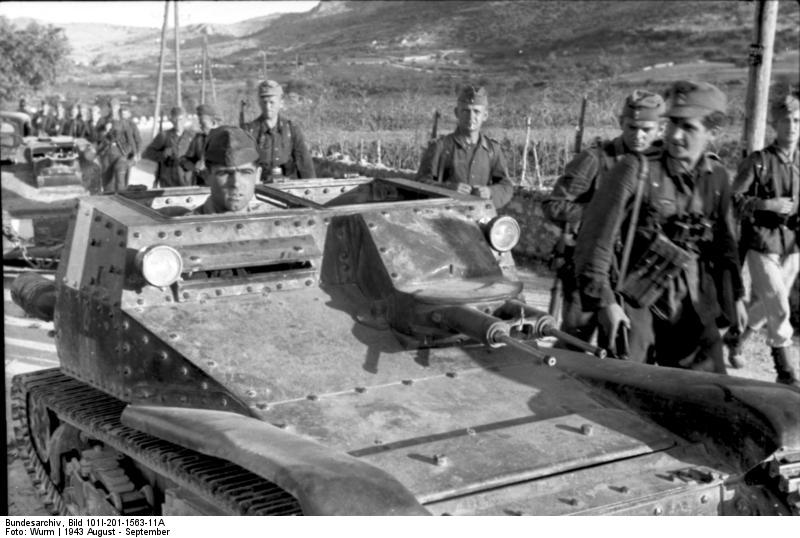
Finnish volunteers of Pohjan Pohjat advancing in Spain with an L3/35 from the unit’s Panssaaripataljoona
Pohjan Pohjat’s Panssaaripataljoona far preferred using the few German tanks that they managed to acquire, and above all the small numbers of captured Soviet tanks and armoured cars with which they eventually equipped themselves. Reports back to Finland repeatedly emphasized the essential uselessness of the Italian L3’s in detail. The Finnish Army would not at any time buy or use any Italian tankettes, although much of value was otherwise learnt from the fighting in Spain.
Return to Previous Post (German Tanks of the Interwar Decades)
Go to Next Post (Russian Tanks of the Interwar Decades
 Copyright secured by Digiprove © 2015 Alternative Finland
Copyright secured by Digiprove © 2015 Alternative Finland


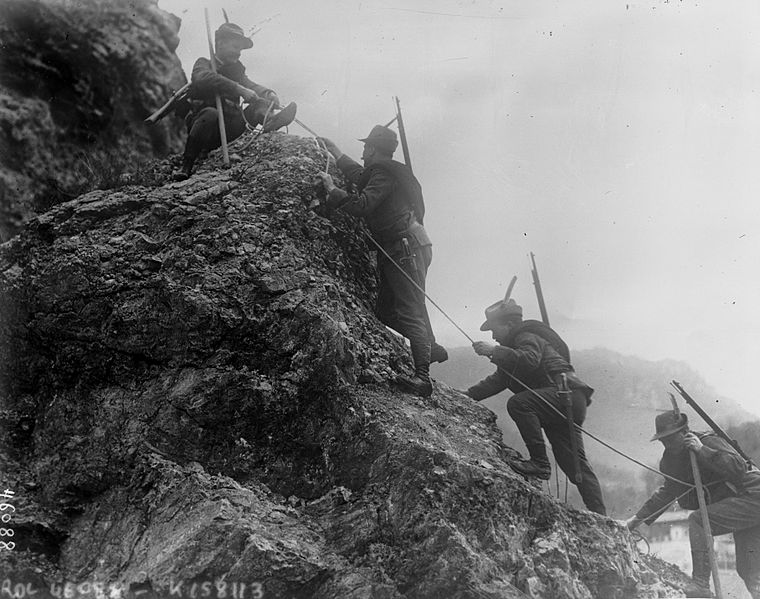
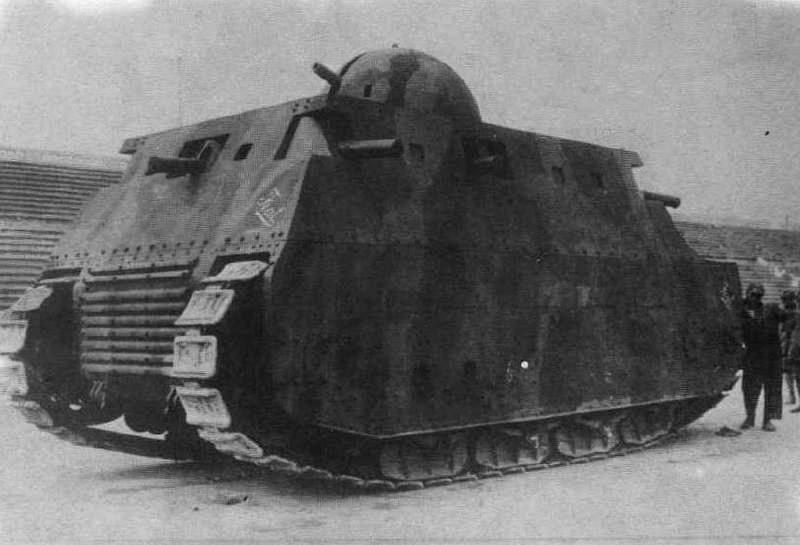
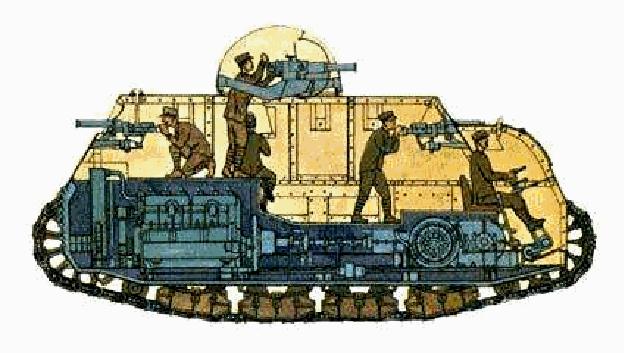
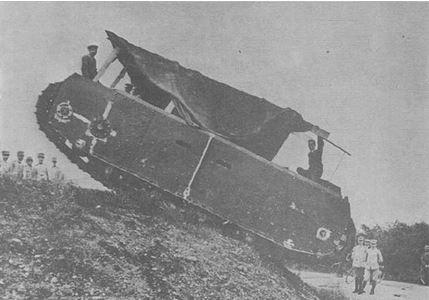
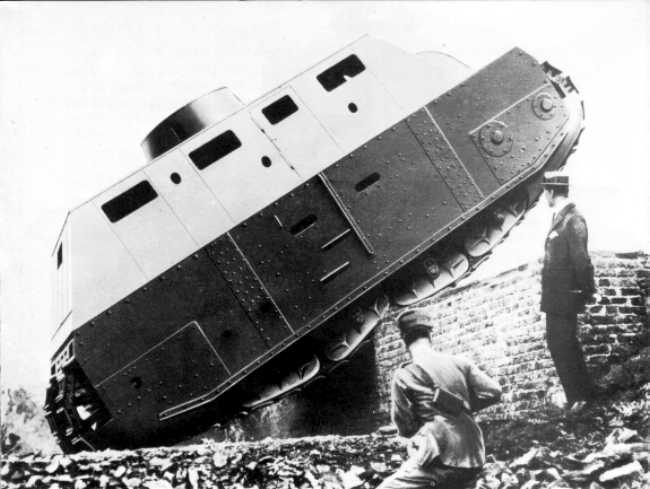
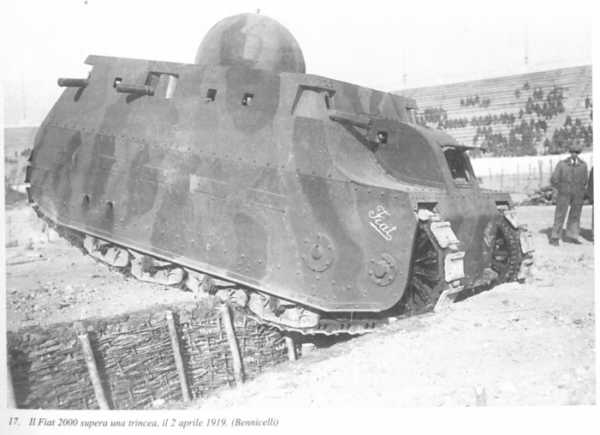

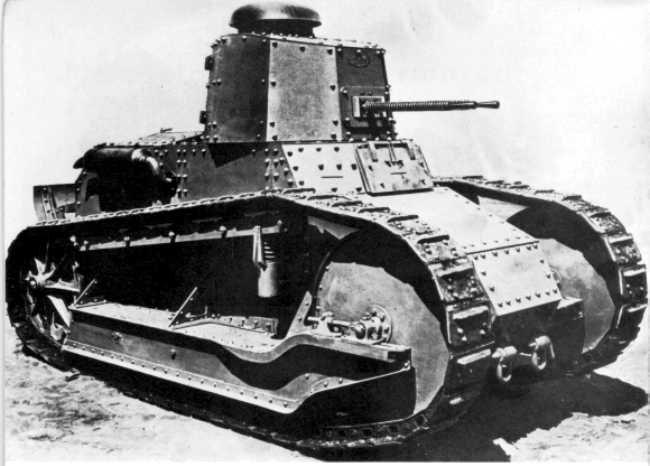
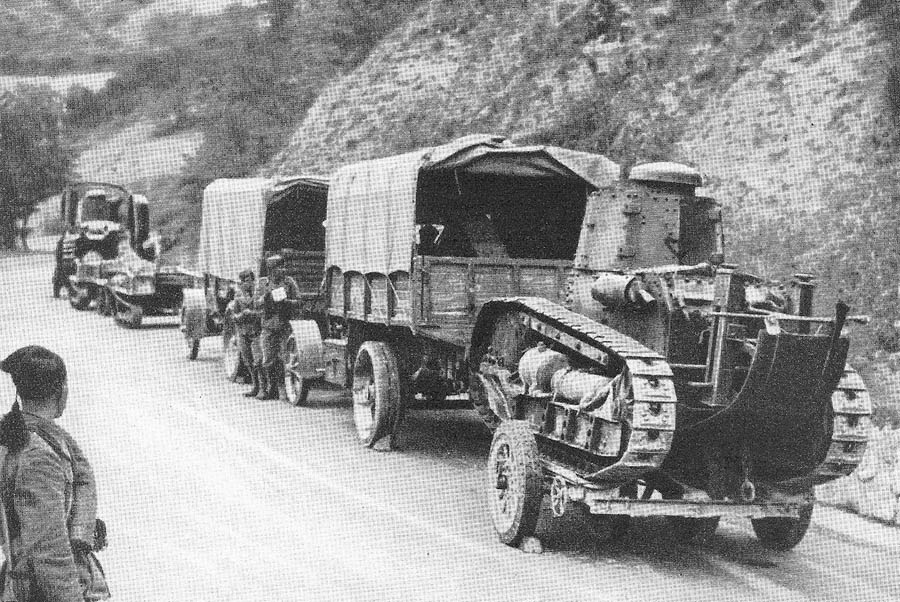
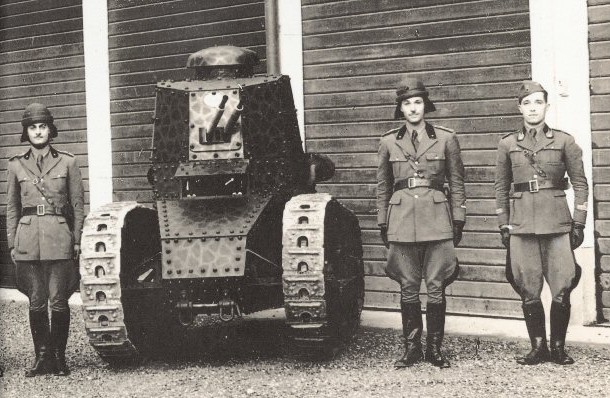
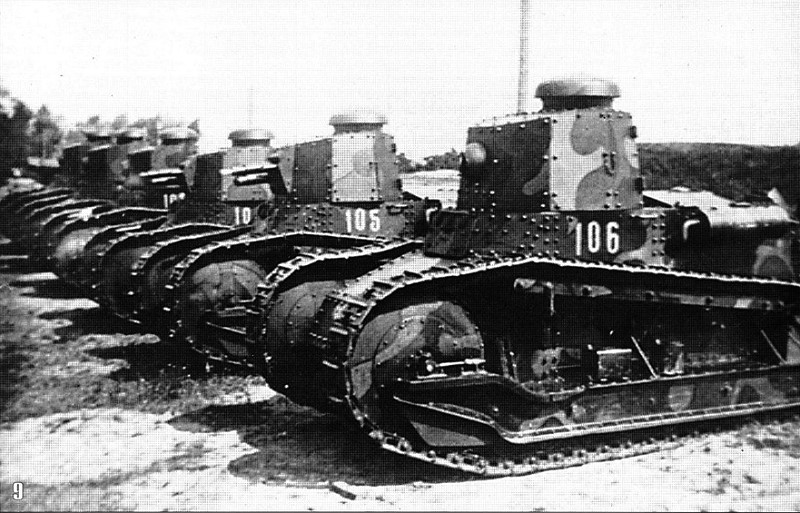
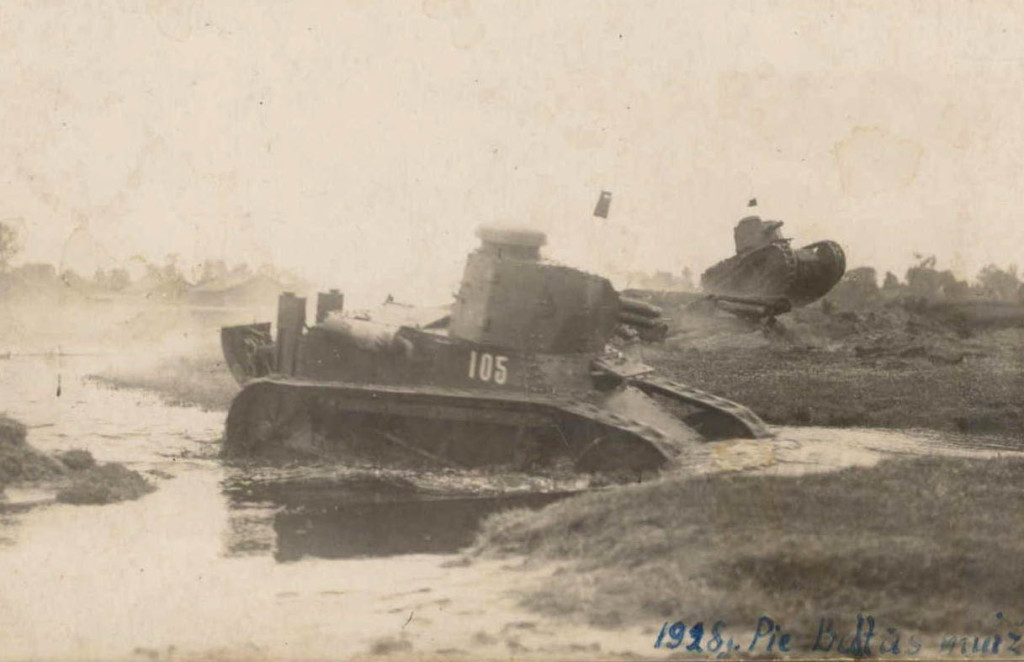
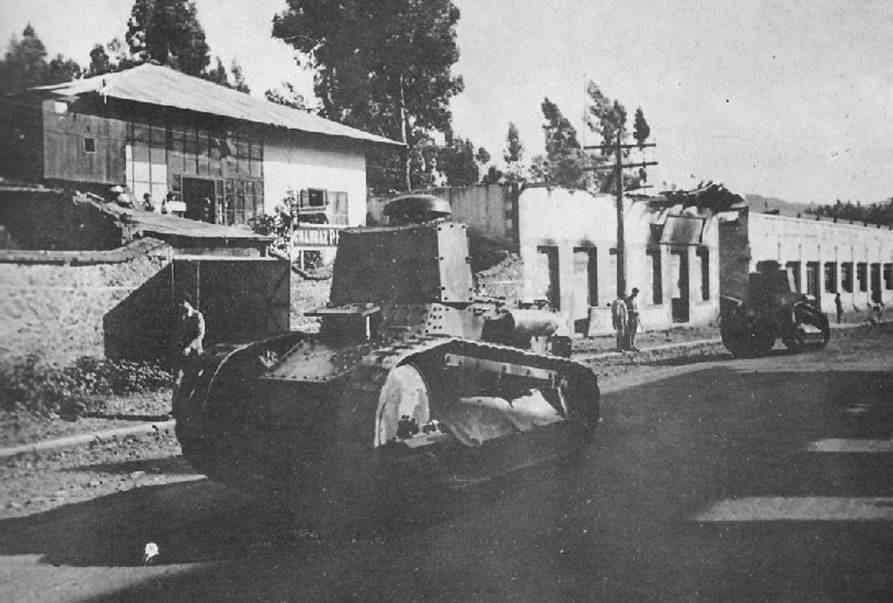
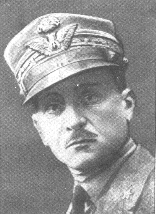
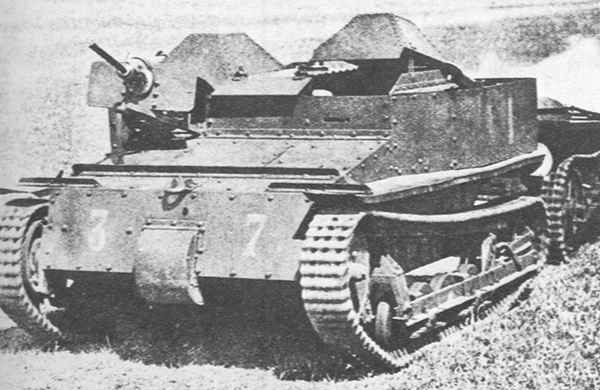
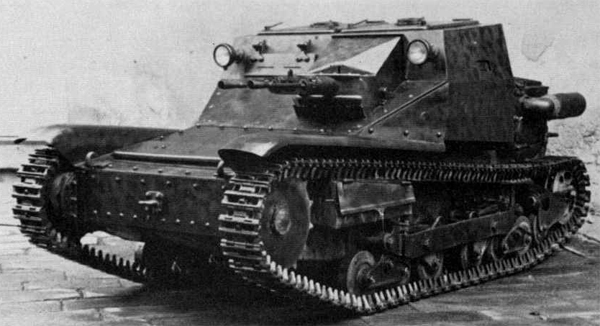
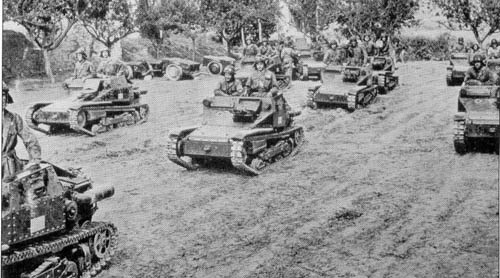
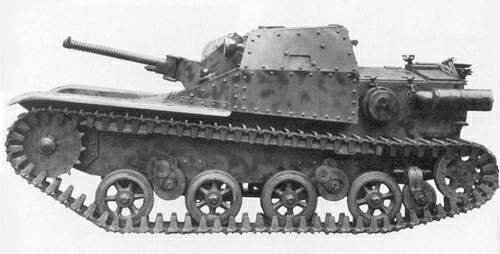
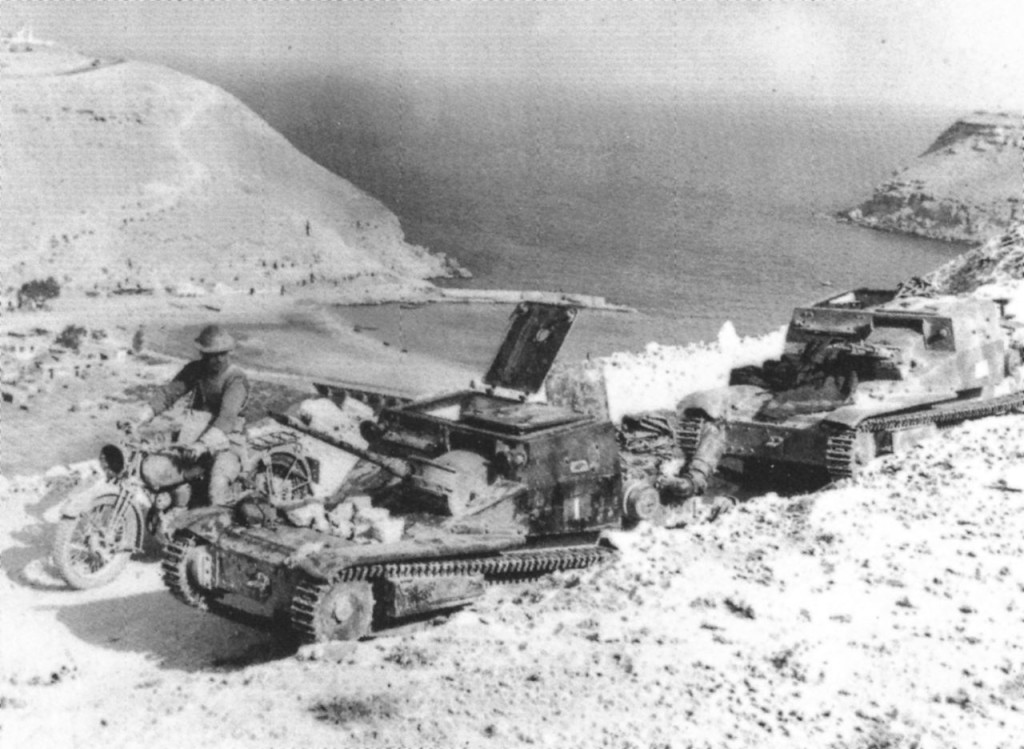
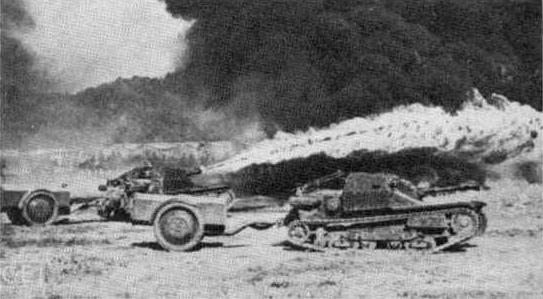
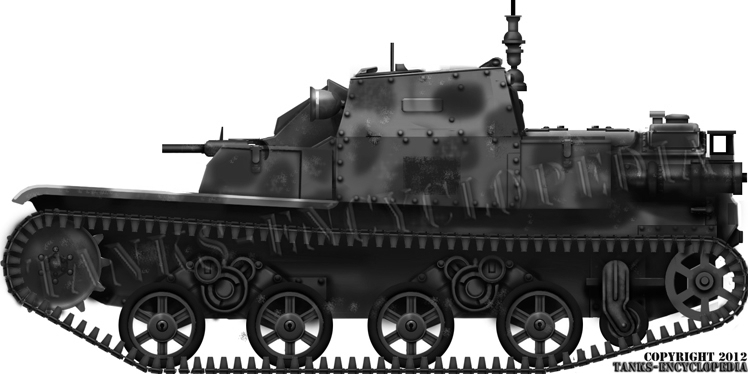
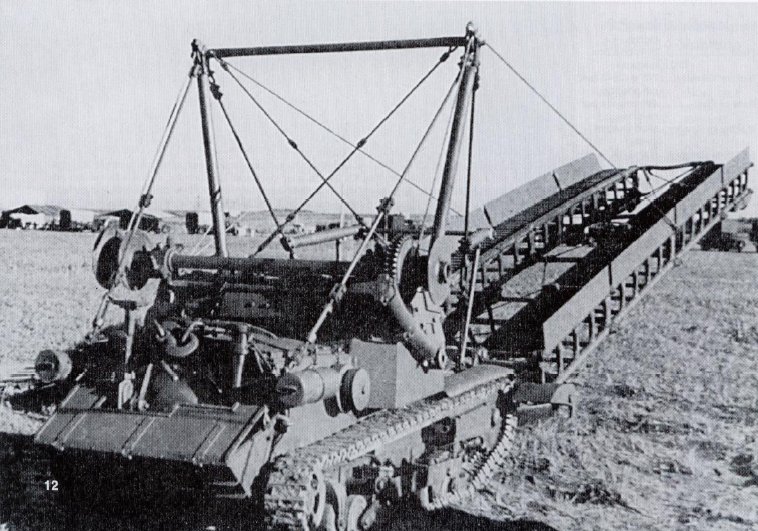
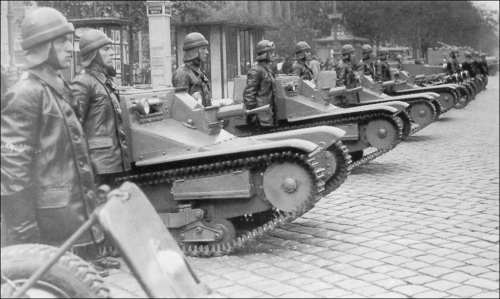
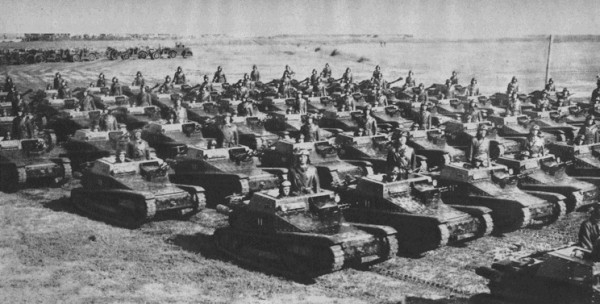
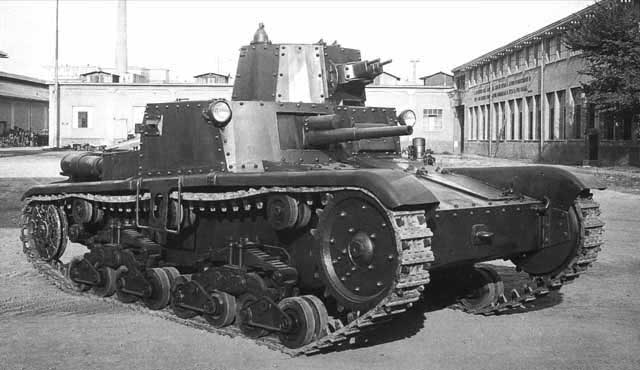
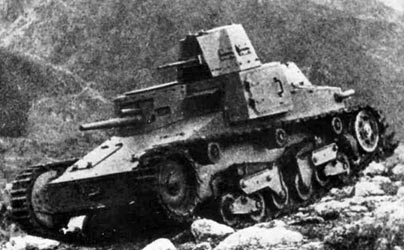
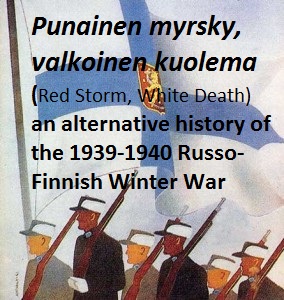
3 Responses to Italian Tanks of the Interwar Decades